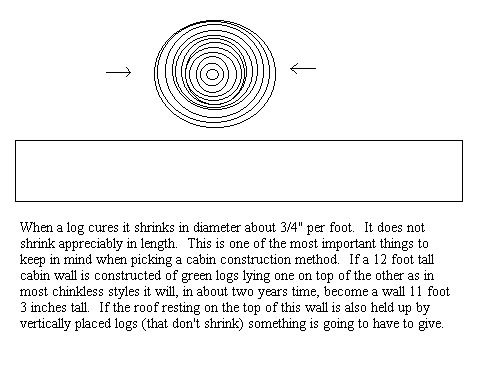
Just to make it plain up front, I am a member of the Log House Builders Association of North America. We are an organization that believes in people building their own log houses and not relying on some company to come in and do things for you. The advantage of listening to members of the LHBANA is that we are not trying to sell anything to anybody. The disadvantage is that we're a bunch of wacko zealots who might get you in over your head. Hey, it's your call.
This page is a discussion of common problems encountered with the building methods used by most modern kit builders. It attempts to explain what is being done and why, and what the pros and cons of each practice are. The object of this page is to give the reader some reasons to go further in their investigations of log house building methods than just taking the word of the first professional builder they may meet. Keep in mind that this is not a condemnation of log houses in general. We feel that there are good solutions to every problem diagrammed here and the last thing we want to do here is scare anybody away from building and living in log houses.
First, what do we mean by Kit Builder?
A log home builder (or company) that constructs log houses at a central yard and then disassembles the house and transports it to the actual construction site. These "kits" are then put back together like a huge Lincoln log set at the owners property and finished on site. Because the kit builders must be able to disassemble their structures they are restricted to only a few of the many types of log architectures that are possible. Most, but not all, commercial log house builders build kits.
Mostly we mean us or people like us. Folks who built one house at a time, mostly to live in themselves. Folks who found out how to build log structures from watching their elders and helping other folks build theirs. Traditional builders often started with one home and then moved on to build another and another until, lo and behold, they'd spent their whole lives doing it.
Cured vs. uncured logs.
Every log house builder has a problem using green (uncured) logs. Logs are expensive. It can take several years to fully cure a log. All the time that log is lying around curing it is not making anybody any money. Most log house builders (even us) end up building with green logs which we know will shrink as they cure. So what's the problem?

So what do we mean by chinkless style?
This is just a method for placing logs in a wall, one on top of the other, that does not require any kind of chinking (filler) between the logs. It is a style that kit builders find very attractive. It looks nice and it can be disassembled and reassembled on the site with minimal effort. You see real chinkless style cabins all over Scandinavia. They're very attractive and last a long, long time. However the kit builder's version of the chinkless construction is not quite the same thing. This is what you would see if you cut through the wall of a chinkless style house.
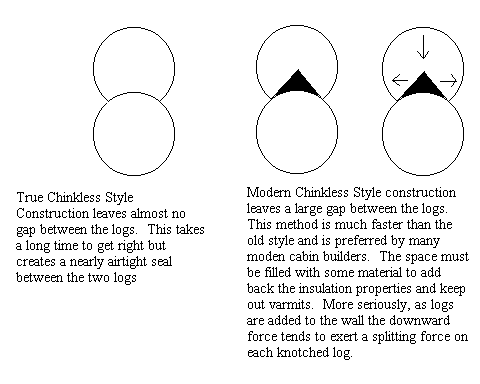
The modern kit builders tend to hog out the areas that you don't see in the joints between the logs. Some even square cut their logs top, bottom and sides.
Why is it bad to cut into the logs?
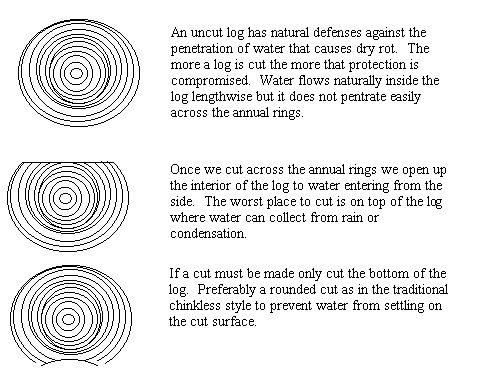
So if you don't do a chinkless cabin how do you keep the wind from whistling through between the logs?
The answer is that you chink the cabin to fill the cracks.
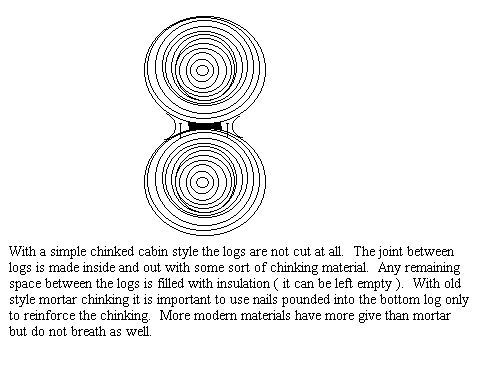
Did you realize there are many ways to create the corners of a cabin?
The Chinkless style usually uses a saddle notched corner but it could use others. One could also use saddle notched corners on a chinked cabin. Cornering style and wall style are really more or less independent. Once again the traditional builders took a great amount of time to construct these corners. They were careful only to cut the bottom of each log and never to cut more than half way through each log. Modern builders tend to simply hog out all the wood you don't see to make the process faster. Some even cut the log tops to make joining faster. When the corners are hogged out the corner is weaker and it can accelerate rot and the weakness of the hook.
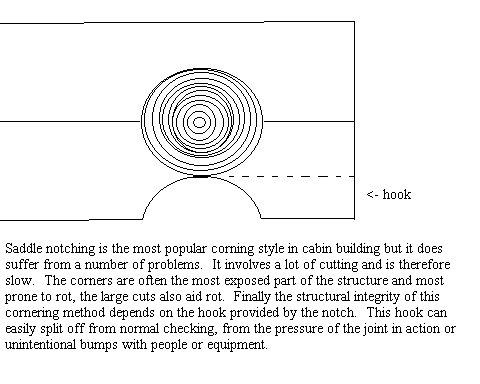
What do the kit builders mean when they tell you that their green logs will shrink to fit?
Usually they mean that they can't wait long enough to cure your logs so they try and make it sound like some sort of advantage. The traditional chinkless style builders always used fully cured logs, otherwise all that work they put into making perfect joints would be wasted.
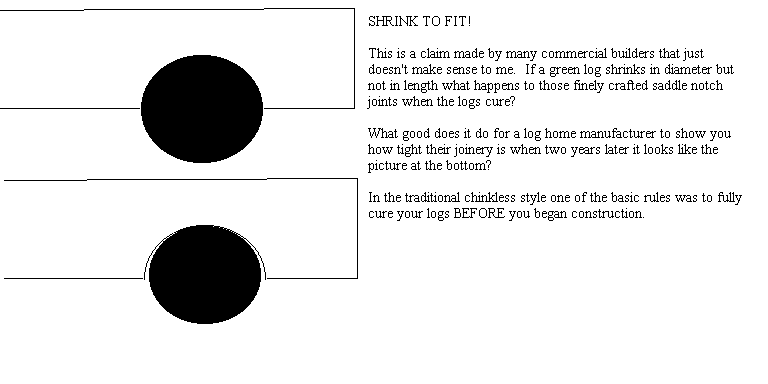
Another claim in the Shrink to fit category is the idea that the walls will seal up as they shrink down.
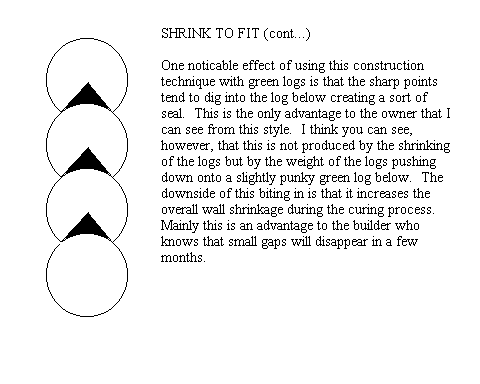
So what is the solution to all these problems?
The short answer is that you don't restrict your options by using a kit builder. There are other styles of cabin construction that solve these problems. They just don't lend themselves to disassembly. These methods include stockade style, dove tail (foxfire) style, and the Pilgrim's old butt method.
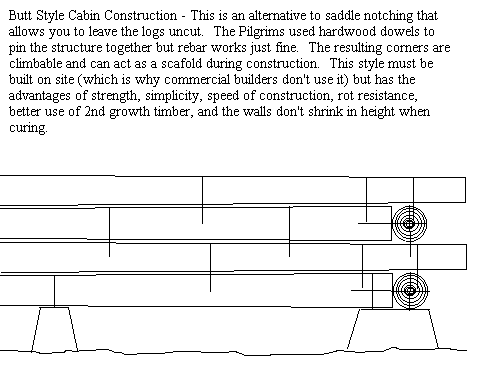
If you want to learn about some of these alternative styles of construction and other practices that will minimize both expenses and problems we would strongly suggest that you take a Log House Building Seminar like the one taught by Ellsworth near Seattle, Washington. Even if you do eventually purchase a log home from a kit builder the knowledge that you gain in the class will give you all the information you need to properly evaluate the product that you are buying. Just please, don't fall for that Shrink to Fit line, it's embarrassing.
Back to building our log house
This page written by Paul Kahle - Last Updated Mar 2014